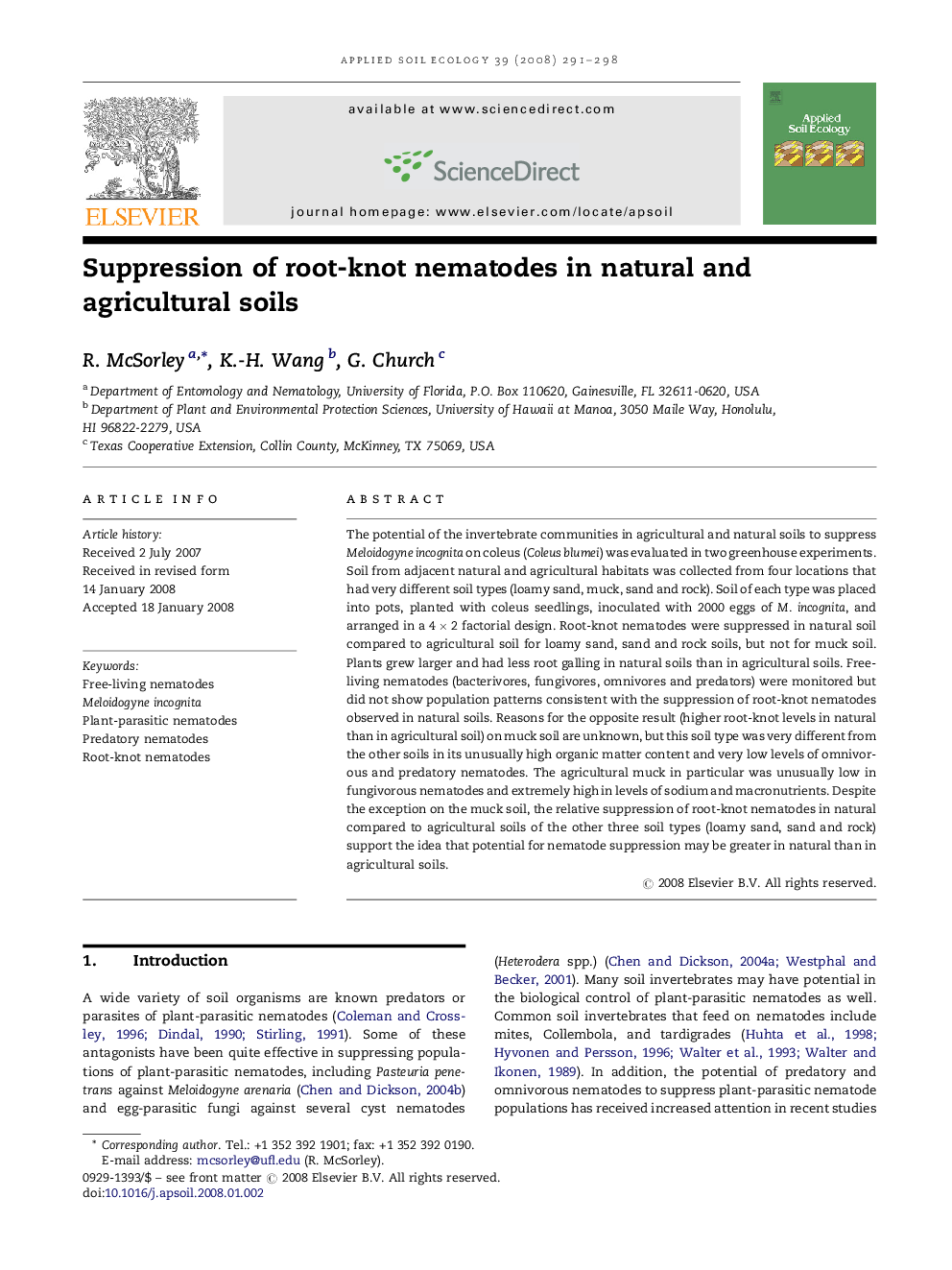| Article ID | Journal | Published Year | Pages | File Type |
|---|---|---|---|---|
| 4383178 | Applied Soil Ecology | 2008 | 8 Pages |
The potential of the invertebrate communities in agricultural and natural soils to suppress Meloidogyne incognita on coleus (Coleus blumei) was evaluated in two greenhouse experiments. Soil from adjacent natural and agricultural habitats was collected from four locations that had very different soil types (loamy sand, muck, sand and rock). Soil of each type was placed into pots, planted with coleus seedlings, inoculated with 2000 eggs of M. incognita, and arranged in a 4 × 2 factorial design. Root-knot nematodes were suppressed in natural soil compared to agricultural soil for loamy sand, sand and rock soils, but not for muck soil. Plants grew larger and had less root galling in natural soils than in agricultural soils. Free-living nematodes (bacterivores, fungivores, omnivores and predators) were monitored but did not show population patterns consistent with the suppression of root-knot nematodes observed in natural soils. Reasons for the opposite result (higher root-knot levels in natural than in agricultural soil) on muck soil are unknown, but this soil type was very different from the other soils in its unusually high organic matter content and very low levels of omnivorous and predatory nematodes. The agricultural muck in particular was unusually low in fungivorous nematodes and extremely high in levels of sodium and macronutrients. Despite the exception on the muck soil, the relative suppression of root-knot nematodes in natural compared to agricultural soils of the other three soil types (loamy sand, sand and rock) support the idea that potential for nematode suppression may be greater in natural than in agricultural soils.
